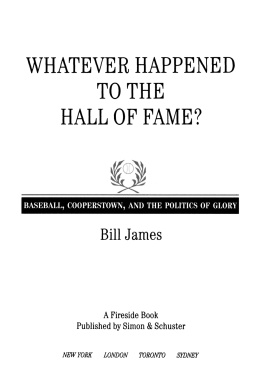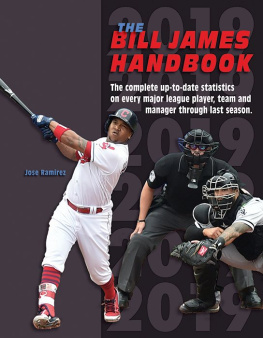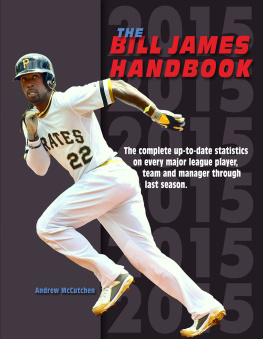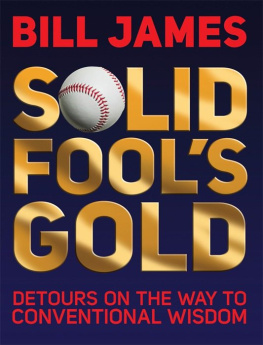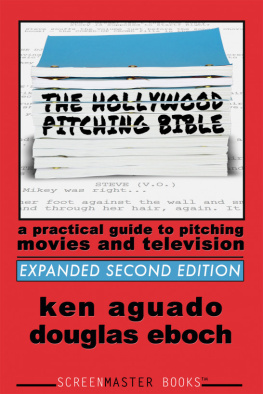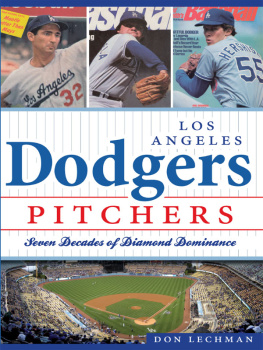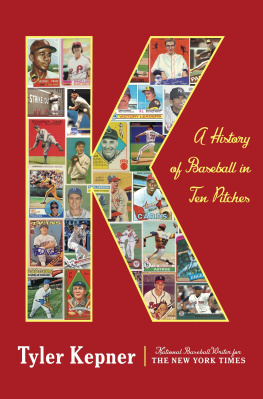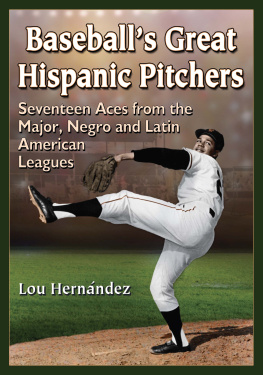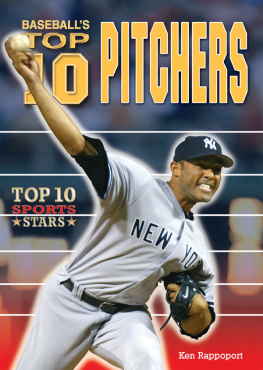Bill James - The Neyer/James Guide to Pitchers
Here you can read online Bill James - The Neyer/James Guide to Pitchers full text of the book (entire story) in english for free. Download pdf and epub, get meaning, cover and reviews about this ebook. City: New York, NY, year: 2004, publisher: Fireside, genre: Science. Description of the work, (preface) as well as reviews are available. Best literature library LitArk.com created for fans of good reading and offers a wide selection of genres:
Romance novel
Science fiction
Adventure
Detective
Science
History
Home and family
Prose
Art
Politics
Computer
Non-fiction
Religion
Business
Children
Humor
Choose a favorite category and find really read worthwhile books. Enjoy immersion in the world of imagination, feel the emotions of the characters or learn something new for yourself, make an fascinating discovery.

- Book:The Neyer/James Guide to Pitchers
- Author:
- Publisher:Fireside
- Genre:
- Year:2004
- City:New York, NY
- Rating:4 / 5
- Favourites:Add to favourites
- Your mark:
- 80
- 1
- 2
- 3
- 4
- 5
The Neyer/James Guide to Pitchers: summary, description and annotation
We offer to read an annotation, description, summary or preface (depends on what the author of the book "The Neyer/James Guide to Pitchers" wrote himself). If you haven't found the necessary information about the book — write in the comments, we will try to find it.
The Neyer/James Guide to Pitchers — read online for free the complete book (whole text) full work
Below is the text of the book, divided by pages. System saving the place of the last page read, allows you to conveniently read the book "The Neyer/James Guide to Pitchers" online for free, without having to search again every time where you left off. Put a bookmark, and you can go to the page where you finished reading at any time.
Font size:
Interval:
Bookmark:
THE NEYER/JAMES GUIDE TO PITCHERS

Also by Bill James
The New Bill James Historical Baseball Abstract
The Bill James Guide to Baseball Managers
Whatever Happened to the Hall of Fame?
This Time Lets Not Eat the Bones
Also by Rob Neyer
Rob Neyers Big Book of Baseball Lineups
Feeding the Green Monster
Baseball Dynasties (with Eddie Epstein)

I want to thank Dick Beverage, Dave Smith, Dick Thompson, and all the other SABR members who delve into baseballs history for nothing more than the sheer joy of the thing. This book is for you guys.
Rob
For Reuben James, my unique and wonderful son.
Bill

FIRESIDE
Rockefeller Center 1230
Avenue of the Americas
New York, NY 10020
www.SimonandSchuster.com
Copyright 2004 by Bill James and Rob Neyer
All rights reserved, including the right of reproduction in whole or in part in any form.
F IRESIDE and colophon are registered trademarks of Simon & Schuster, Inc.
For information about special discounts for bulk purchases, please contact Simon & Schuster Special Sales: 1-800-456-6798 or business@simonandschuster.com
Designed by Ruth Lee-Mui
Manufactured in the United States of America
10 9 8 7 6 5 4 3 2
Library of Congress Cataloging-in-Publication Data
James, Bill and Neyer, Rob
The Neyer/James guide to pitchers : an historical compendium of pitching, pitchers, and pitches / Bill James and Rob Neyer.
p. cm.
1. Pitchers (Baseball)United StatesBiography. 2. Pitching (Baseball)United StatesHistory. I. Title.
GV865.A1J36 2004
796.35722dc22 13518856
ISBN 0-7432-6158-5
ISBN-13: 978-0-743-26158-6
eISBN: 978-1-439-10377-7
CEREMONIAL FIRST PITCH
Hello, Im Rob Neyer.
And Im Bill James.
This book began the way that wars, scandals, and coauthored books usually begin: over lunch. This was more than ten years ago; the two of us worked together from 1989 through 1992. It was lunch one day in 1991 Neyer was probably eating a cheese sandwich, James was probably munching on a large slab of some dead animal and the two of us were talking about some pitcher from the 1950s. Memory suggests that it was Harvey Haddix. Between the two of us, we probably knew a couple of hundred facts about Harvey Haddix. We knew that he was small, that he threw left-handed, that he was very quick and an outstanding fielder. We knew that he won twenty games for the Cardinals in 1953, and also hit .289 that year. We knew of course about the twelve perfect innings in a 1959 game that he eventually lost, we knew that he helped the Pirates win the World Championship in 1960, and we knew that later on he was an effective reliever for the Orioles.
However, one of us happened to ask, What did he throw?
Was he a curveball specialist? Was he sneaky fast? Did he live on the sinker, or did he have a trick pitch? We didnt have a clue. We knew nicknames and anecdotes and stats by the gross, but about this very basic element of his careerwhat he did on the moundwe drew a blank.
We thought about that for a minute, and then the conversation moved on. Ten minutes later, twenty minutes later, we were talking about another old pitcher Paul Derringer or Larry French or somebody. Same thing. We knew many facts about the pitcher, but in this fundamental area, central to his career, we were about as useful as a gorilla with a sewing machine. A few minutes later, a third pitcher, and by this time we were primed to focus on the blank, like your tongue feeling out a missing tooth.
Both of us are compulsive collectors and readers of oldbaseball books. Both of us spend too many hundreds of dollars every year on our baseball libraries. Yet not only did we not know what many pitchers threw, we discovered that we had no reliable way to find out. There was no reference book, anywhere, that passed along this information. The encyclopedias were entirely silent on the subject. The Baseball Registers, a basic source for so many types of information, were no help at all. The old baseball guides were of little use. There were books about pitchers and pitching, of course, but these were hit and miss; finding specific information about a specific pitcher was always a long shot.
And so, realizing there was a hole in the baseball reference library, we simply set out to accumulate information about the subject. Rob went through Total Baseball and made a list of every pitcher in history who had pitched at least one thousand innings in the major leaguesthrough 1990, there were 905 of themand we went to work, finding whatever information we could find about each pitcher.
In many ways this project was simply blessed. The systematic pursuit of this simple questionWhat did he throw?was like opening a door into a vast, green area of the game that neither of us was ever really aware of before. One thing led to another, led to another, led to another. We wound up understanding things that we had never understood before; perhaps, in a few cases, understanding things that no one had understood before, because no one had pursued this question before. We started with a little cigar box in which to store information, more empty than full, and pushed out one side of it, and pushed out another, and rebuilt another, until we wound up with a very large pile of very interesting information.
The first thing we realizedwe figured this out at lunchwas that if we were to accumulate this information, it would be of little use unless we documented it. How do we know Vean Gregg threw a drop ball? How do we know Herb Pennock threw an overhand curve, a sidearm curve, a change, a fastball and an occasional screwball?
Because we said so not only isnt a good answer for you; it isnt an answer that is helpful to us, either. Very often there are conflicts between sources. One source says that Nelson Potters best pitch was a screwball; another describes him as a knuckleball pitcher. How do you know what to believe? A documentary trail is essential to sorting out those conflicts, so from the first minute that we began working on this, we have maintained a complete record of the sources that we used.
And what a record it has become. In the process of compiling these files, we have used (and documented) thousands upon thousands of sources; we have no idea how many thousands. But this is getting a little ahead of the story. What did we mean by saying that this project was, in some ways, simply blessed?
At that time, James was the employer, Neyer the employee. James is not organized enough to keep track of his own wallet, let alone keep track of what somebody else is doing all day, and so being James employee involves long hours of sitting around waiting for an assignment. This project gave Neyer something he could do, consuming an essentially limitless number of hours; not only something he could do, but something which was fun, interesting, and actually productive.
We had several hundred old issues of The Sporting News in the office. Theyre a lot of fun to read, but we might go a year without looking at them. This project created a reason to look through them, page by page, article by article. Im not wasting time reading through a stack of
Next pageFont size:
Interval:
Bookmark:
Similar books «The Neyer/James Guide to Pitchers»
Look at similar books to The Neyer/James Guide to Pitchers. We have selected literature similar in name and meaning in the hope of providing readers with more options to find new, interesting, not yet read works.
Discussion, reviews of the book The Neyer/James Guide to Pitchers and just readers' own opinions. Leave your comments, write what you think about the work, its meaning or the main characters. Specify what exactly you liked and what you didn't like, and why you think so.

